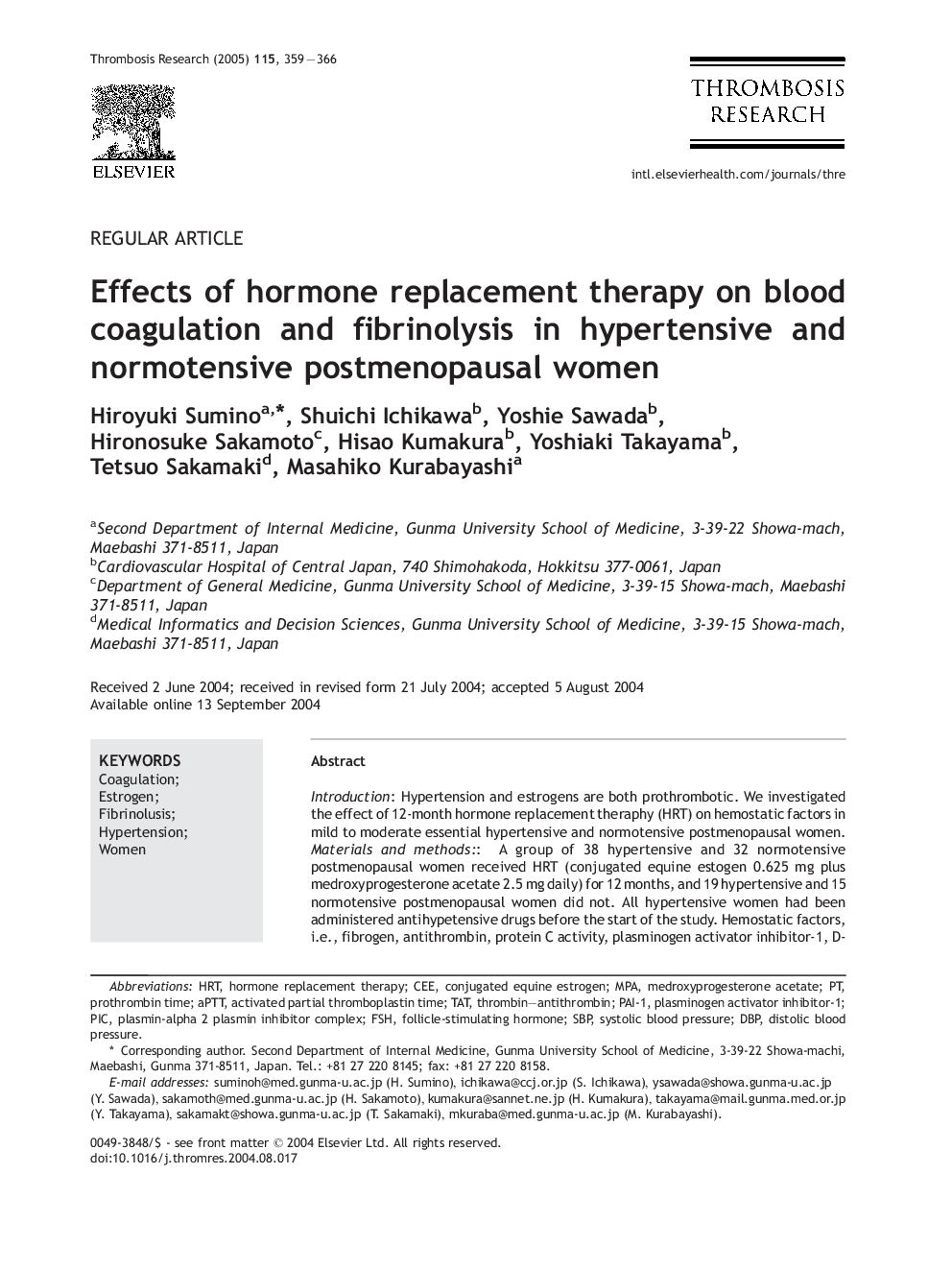| Article ID | Journal | Published Year | Pages | File Type |
|---|---|---|---|---|
| 9185015 | Thrombosis Research | 2005 | 8 Pages |
Abstract
Introduction: Hypertension and estrogens are both prothrombotic. We investigated the effect of 12-month hormone replacement theraphy (HRT) on hemostatic factors in mild to moderate essential hypertensive and normotensive postmenopausal women.Materials and methods: A group of 38 hypertensive and 32 normotensive postmenopausal women received HRT (conjugated equine estogen 0.625 mg plus medroxyprogesterone acetate 2.5 mg daily) for 12 months, and 19 hypertensive and 15 normotensive postmenopausal women did not. All hypertensive women had been administered antihypetensive drugs before the start of the study. Hemostatic factors, i.e., fibrogen, antithrombin, protein C activity, plasminogen activator inhibitor-1, D-dimer, and plasminogen, were measured in plasma of all women before, and 6 and 12 months after the start of study.Result: The antithrombin levels of the hypertensive and normotensive women who received HRT had decreased at 6 (both P<0.001) and 12 months (P<0.001 and P<0.01) and their D-dimer at 12 months (both P<0.05) and plasminogen levels at 6 (both P<0.001) and 12 months (both P<0.001) has increased, but other hemostatic factors were unchanged. There were no changes in hemostatic factors in either control group.Conclusion: HRT for 12 months activated blood coagulation and fibrinolysis in both hypertensive and normotensive postmenopausal women. Administration of CEE plus MPA therapy to hypertensive or normotensive postmenopausal women may be related to the thromboembolic events.
Keywords
Related Topics
Health Sciences
Medicine and Dentistry
Cardiology and Cardiovascular Medicine
Authors
Hiroyuki Sumino, Shuichi Ichikawa, Yoshie Sawada, Hironosuke Sakamoto, Hisao Kumakura, Yoshiaki Takayama, Tetsuo Sakamaki, Masahiko Kurabayashi,
